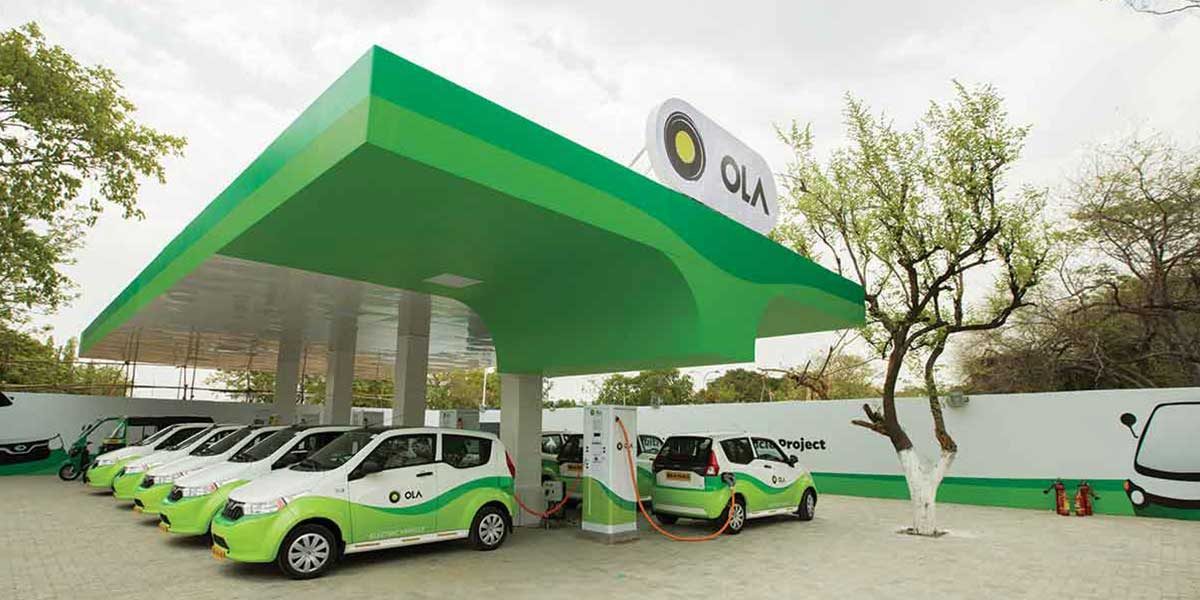Indian cab major Ola is now planning to invest heavily in electric vehicle project to grow the vertical alongside its cab booking service.
“We are focusing on building an e-vehicle fleet. More investment will go in it. We will update (you) soon it,” Bhavish Aggarwal CEO of Ola was quoted as saying to Moneycontrol.
On the lines of Mahindra and Tata, Ola is focusing on building an e-vehicle fleet and more investment is foreseen.
“Our charging stations are the first of their kind, allowing for different types of electric vehicles to be charged under one roof. It is very important to build local solutions for local problems. Ola share solved the problem of pollution to a great extent, and now electric vehicles will extend that benefit,” Aggarwal added.
The company also made multiple presentations to Karnataka IT minister Priyank Kharge to extend the e-vehicle services in the state.
So far Ola has invested about Rs 50 crore in the e-vehicles project. Earlier this year, the company launched an electric fleet of 200 electric vehicles, including taxis, buses, e-rickshaw and autos in Nagpur.
On-demand cab hailing aggregation market is slated to touch $7 billion by 2020. Last year, cab-hailing apps registered almost 4X growth in 2016, as per a report by market research and advisory firm RedSeer.
But at the same time, ANI Technologies, parent company of Ola, had reported loss before tax of Rs 2,314 crore in FY16, as compared to Rs 796 crore in FY15.
Recent Development in E-Vehicle Market
The Indian government also announced to support at least 60 percent of R&D cost for developing an indigenous low-cost electric technology, in January this year.
Prior to this state-owned Energy Efficiency Services Ltd (EESL) has invited global bids for 10,000 electric sedans that will run up to 150 km on a single charge, for use by government departments, taking a big step to achieve power minister Piyush Goyal’s dream of having only electric cars on Indian streets by 2030.
The National Electric Mobility Mission Plan seeks to have 400,000 electric vehicles on India’s streets by 2020. However, electric cars have a tough road to travel. Due to lack of technology and demand, sales of electric vehicles and hybrids declined to 25,000 units in 2016-17 from 32,000 the previous year.
Earlier in June, Tesla CEO Elon Musk had said that he is in talks with the government of India regarding temporary relief on import restrictions until a local factory is built in the country.
Mercedes India also said if the government gives adequate support, electric vehicles would be here by 2020.
According to Roland Forger, CEO of Mercedes Benz India, At present in India 65% of electric energy is produced through fossil fuels. These are produced in factories, who don’t have cleansing mechanism. Therefore diesel fuel will produce less pollution than an electric vehicle.
Keeping this in mind, National Thermal Power Corporation (NTPC), India’s largest power generator, has entered into electric vehicle (EV) charging business and set up charging stations in Noida and Delhi.
It seems Ola’s e-vehicle project will help it to compensate the losses it had made so far.
Recently, Ola had raised $36 million (Rs 231 crore) from Tekne Private Ventures, and has been aggressively investing into its technology and expansion programme. To beef up its own fleet, it had invested ($15.5 Mn)Rs 100 crore into its leasing subsidiary Ola Fleet Technologies.
Ola: Website













